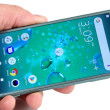Review: LG G4 for AT&T
Jun 15, 2015, 2:00 PM by Eric M. Zeman

AT&T's variant of the LG G4 does little more than trade one set of bloatware for another. The performance is about on-par with Verizon's model, which is to say this Android phone does a really good job. Here's Phone Scoop's in-depth report.
Form
Is It Your Type?
The G4 is a modest update to LG's flagship smartphone line. It bumps up some specs and is available with a leather back cover. Where some phone makers have raised the stakes with artfully crafted designs, LG is happy to improve its premiere device where it matters most: performance. The G4 is for people who don't necessarily care about having a metal-and-glass phone, but still want a full-powered device.
Editor's Note: Since the LG G4 is largely identical across carriers, portions of this review are shared with Phone Scoop's review(s) of other G4 variants. Rest assured, all the AT&T-related aspects have been freshly and thoroughly evaluated for this review.
Body
LG appears to be happy to buck industry trends. Its major competitors — Apple, HTC, Samsung — have all fielded high-end devices made of metal and glass. LG, for its part, is sticking to plastics and — should you care to splurge — leather. If you pit the G4 against the iPhone 6, One M9, and Galaxy S6, the G4 is the least presumptuous of the bunch and yet also the oddest.
The phone carries forward the basic design language from the G2 and G3. It has sharp corners toward the front, a very rounded back panel, and strangely-placed buttons. It has a clean look and adds a very slight curve to front (something LG is convinced consumers want).
The front of the phone is black, no matter which rear cover you select. There's an incredibly slim, chrome-colored rim that encircles the glass. It helps define the edges. Two different plastic shells are available off the shelf (white or gray), as are a handful of leather options. Personally, I am not a fan of the plastic options. The diamond pattern in the plastic is distinctive, but the plastic material drags down the perceived quality. If you can, go with one of the leather panels. Most U.S. carriers are only offering black leather, but there are other shades available online.
Leather gives the G4 a much-needed boost in personality. Motorola was first to break out the leather with last year's Moto X, but leather is still rare in the world of phones. Leather says "bad-ass" in a way plastic and metal can't. I like the leather covers LG designed. Leather has its own problems, though: It can be gouged and marked up, and it will certainly discolor over time, but those signs of use are what's so appealing about leather. Think about how great a good leather jacket or wallet looks and feels after a year of wear.
LG clearly isn't looking to win any awards for the slimmest or sveltest handset. With a 5.5-inch screen, the G4 is tall, wide, and disappointingly thick at 10mm. It's far bigger than the iPhone 6, Galaxy S6, or One M9. The tapered edges help a lot, but they can only do so much thanks to the general curved shape of the phone. The phone is bulky enough that those with small hands may find it too big. I found it to be manageable with just one hand, but only barely. You can cram it into your pockets easily enough, but make sure the screen is facing your body. The curved shape makes for an awkward profile if the phone is in your pocket with the screen facing outwards.
The overall quality of the phone is good, but plastic is plastic. The leather rear cover helps boost the appeal of the phone significantly when it's in your hand, and adds a welcome amount of texture. Otherwise, the materials are construction are decent enough, but not in the same league as LG's metal-clad competitors.
The G4's front face is sharp. As noted, the chrome rim helps define the edges and the tasteful design choices leave a clean, appealing fit-and-finish. Aside from the rim, the only other non-black element is LG's logo, which is emblazoned below the display. There are no buttons to speak of, and the user-facing camera and earpiece grille blend in well with the face.
You'll find no buttons along the outer edges of the G4. The left and right sides are completely barren of any controls or ports. You'll spot an IR blaster on the top, as well as a small hole for a microphone. The stereo headphone jack and USB port are both on the bottom of the phone.
The volume and screen lock buttons are on the back of the G4, as they are on most LGs now. LG believes this is a more comfortable way to reach the controls based on how your index finger naturally falls on the back surface of the phone. The array is positioned just below the camera sensor. The volume buttons are indented a bit and the screen lock/power button has a raised profile. All three buttons have decent travel and feedback. It takes time to get used to where these buttons are located. There is no dedicated camera button, but the volume keys double as shortcuts to user-defined actions (such as the camera) if you want. Unlike other LG phones with this button configuration, I managed to avoid smearing my fingerprints all over the camera lens cover.
The advantage LG has over Apple, HTC, and Samsung is that the G4's rear cover is removable. The cover peels off, the battery is removable, and the G4 has a memory card slot, too. LG and its carrier partners in the US are offering extra batteries and memory cards to those who order the phone the first few weeks it's available (hurry!). These are must-have features for some people. Oddly, the G4 uses micro, not nano, SIM cards. Most other flagships have adopted the smallest version of the SIM card.
I think LG could have done a better job with the hardware. It's good, but it doesn't necessarily keep pace with the competition. As far as I am concerned there's no point to buying the plastic version. Get the leather rear cover if you're going to buy the G4. It makes a huge difference and helps set the phone apart.
Performance
Screen
The G4 has one of the best screens available in the market today. It measures 5.5 inches across the diagonal and has quad HD (2560 x 1440 pixel) resolution. LG's IPS LCD panels are generally excellent and the G4's is absolutely top notch. It's crisp, bright, and colorful. Viewing angles are excellent, and there's no color change or brightness drop when tilted. Outdoor viewability is quite good, as well. If the G4 has one killer feature, this is it.
Signal
The LG G4 was a strong performer on AT&T's network. I tested the phone in New Jersey and New York City and came away impressed. It almost always had access to LTE and connected calls on the first dial every time. The phone dropped to an HSPA connection several times, but I didn't notice any impact on the ability to make calls or surf the web. Data speeds were fastest under LTE coverage, but the G4 was quick even in HSPA coverage areas. Email loaded in a flash, and Instagram photos uploaded in a blink. The G4 did well in known weak spots.
Sound
Call quality on AT&T's network was superb (just like on Verizon's). I was pleased with both clarity and volume through the earpiece. The G4 did an excellent job. Voices sounded warm and present, as if the person was in the same room with you. Those I spoke to through the G4 said I sounded very good. The speakerphone offers plenty of volume, but was prone to distortion with the volume set high. Ringers and alerts produce plenty of noise and should get your attention most of the time. The vibrate alert is of average strength. It got my attention most of the time, but not always.
Battery
The G4 has a 3,000 mAh battery, which is one of the largest available in this class of device. I found it provided a full day of battery life, but it didn't quite have as much juice left at the end of the day as the Verizon variant did. It consistently delivered 16.5 hours of uptime, with just a small amount of power to spare at bedtime. I always leave the WiFi, Bluetooth, and GPS radios active, and I had the phone connected to a smartwatch most of the time. That extra battery LG is offering with the G4? It could come in handy with the AT&T version, especially if you're a heavy user.
LG gave the G4 a modest battery saver tool. You can set it to come on automatically when the phone reaches 15%, or toggle it on/off manually. It doesn't do much to conserve energy, however, and is limited to squashing background processes and notifications. It can extend your battery long enough for you to get safely home at the end of the night, or to find a charger, but it's not going to magically produce an extra day of standby time.
The G4 supports Quick Charge technology and will score a massive boost in energy after just 15 minutes plugged into the right type of charger.
Basics
Menus
The G4 runs Android 5.1 Lollipop with LG's user experience dressing everything up a bit.
The lock screen supports LG's KnockOn and Knock Code tools. With KnockOn, tap twice to wake the screen so you can check the clock and notifications. With Knock Code, tap in a unique pattern - anywhere on the screen - to unlock the phone. The G4 includes normal security options (PIN, password, pattern) and you can opt to view just a clock, or a clock along with five user-assignable shortcuts that are located at the bottom of the screen.
There are three home screen panels active out of the box; two of them are crammed with AT&T widgets and shortcuts. As with all Android devices, however, you can strip these away and customize the home screens however you see fit. The selection of widgets, wallpapers, and shortcuts is significant.
The default setting for the main app drawer is a grid with several pre-filled folders of Amazon, Google, LG, and AT&T apps. You can choose small or large icon sizes, and view them in alpha, custom, or downloaded order. LG's tool for hiding and uninstalling apps is better than most, which make it a breeze to rid your device of bloatware (or at least hide those annoying extras.)
The notification shade works pretty much the same as it does on other Android devices. The toggles and other controls can be adjusted to suit your needs. The toggles slide sideways to reveal more options. What I like most is the option to view just the toggles, or add sliders for brightness and volume.
LG's QuickMemo is available from the notification shade. This function takes a screenshot and lets you mark it up and share it. As with other LG phones, the QSlide apps are on board, too. These are best accessed from within the supported app directly (more on those later.)
The G4 includes LG's EasyHome home screen set-up for first-time users. This strips away a lot of the extra junk and makes the phone easier to use.
The settings menu is arranged as a long, single list, but you can change it to a tabbed view if you want. The tabbed view requires less scrolling, but it takes longer to figure out which settings are hiding under which tabs. The G4 includes a wide array of options for customizing the phone's behavior. For example, you can arrange the main Android control buttons (home, back, etc.) at the bottom of the screen however you like. You can have up to four buttons, some of which are shortcuts to LG software, such as QSlide or the dual-window feature.
LG's dual-window allows two apps to run on the screen at the same time. This is a feature seen on Samsung's phones, too. It's easy to activate and use, and lets power users swap content between apps faster and easier. You can also choose to enable one-handed operation, which shrinks down the keyboard and dialpad into a bottom corner.
Last, the G4 is one of the first handsets to include LG Smart Bulletin. Smart Bulletin is sort of like Google Fit and Google Now rolled into one. It tracks your steps, but also shows your daily calendar, music app controls, QRemote controls, and lets you manage Smart Settings. Smart Settings are a new offering from LG that promise to reduce friction in your life as you move around. It relies on location and lets you configure certain settings for when you're home or away. For example, the G4 will know when you get home from a long day at work and can automatically disconnect your Bluetooth headset, turn on WiFi, and change the ringer. Smart Bulletin is off by default on the AT&T G4, which means users have to seek it out and turn it on.
The G4 is one of the first phones to ship with Qualcomm's Snapdragon 64-bit 808 processor mated with 3 GB of RAM. The phone does everything lickety-split. Not once did it ever feel bogged down or slow. It was fast, Fast, FAST, all the time. However, it also tends to get a bit warm. The camera app, in particular, causes the G4 to heat up a bit. I also noticed the phone randomly get warm in my pocket for no apparent reason.
Calls and Contacts
LG refreshed the design of the phone app for the G4, which also integrates your contacts. The app includes a nice dialer to access to call history, contacts, favorites, and groups along the top. I like that you can edit the tabs. You can also open the notepad and messaging apps. Advanced settings include an auto-redial if you can't get through the first time and a pop-up notification for incoming calls when you're using other apps.
The phone has noise suppression to eliminate background noise so those you speak to can hear you better, and a voice clarity feature that purports to improve conversations for you. I didn't notice a difference when I activated this feature.
The G4 includes some gestures to interact with the phone, such as answering calls by bringing the phone to your ear, or silencing calls by flipping the phone over.
The contacts app syncs with myriad online contact databases and makes it a cinch to sort between them for easier viewing. Individual contact cards hold reams of data, and the G4 has a great assortment of contact widgets.
Both the phone and contact apps are available as QSlide mini-apps. LG made an important change to how these are accessed that I think will reduce how often people use them. In previous versions of LG's user interface, there was a button in the upper corner that, when pressed, shrank the app to a small window running on top of other apps. This dedicated QSlide button is gone. Now, the option to turn the phone or contact apps into their minimized QSlide versions is just another option in the settings menu. In other words, the process now takes two steps instead of one.
As before, the transparency of the QSlide apps can be adjusted, and you can move the app window to any spot on the screen. The QSlide apps are at their best when several are used at once. They're a great tool for power users.
Messaging
The G4 has a typical set of messaging tools. As always, Gmail is installed and so is a generic email app. The Gmail app is all you really need thanks to its support for all other email services. You can delete or hide the generic app.
Google Hangouts is on board and so is the older, generic Google SMS app. The newer Google Messenger app is MIA. The generic SMS app is the default for messaging, but you can assign another app of your choosing. The SMS app has been updated with Material Design, but I prefer the newer Messenger app from Google better. U.S. wireless companies don't seem to agree just yet.
Facebook, Twitter, and Google+ are all pre-installed, but Facebook Messenger is absent.
Extras
Media
The G4's pre-loaded media apps more or less mirror those of other recent AT&T phones. The phone comes with Google's Play apps for buying and consuming movies, books, TV shows, and magazines. These apps work well. The G4 also has the native YouTube app, as well as a basic music app for playing side-loaded content. The simple music player works well; it's too bad there's no similar app included for your side-loaded video.
If you prefer media services other than Google's, the AT&T Mobile TV app is the only extra. This app streams video clips over the network. It carries a monthly fee and works best over LTE.
If you want to control your home theater gear, the G4 will let you do just that with the QRemote app that works with the phone's IR port. QRemote is a basic universal-remote app; it doesn't offer a content guide or anything pertaining to actual shows/movies.
Want to share stuff from your phone to other gear? The stand-alone MP3 player has DLNA built in and the tool is dead simple to use. There's an icon at the top of the screen that, when pressed, prompts you to connect to nearby TVs or stereo receivers. Google's apps are all cast-enabled and can push content to any TV with a Chromecast dongle ($35).
Camera
The G4 makes some changes to the camera app that LG has used on several other handsets this year, but it isn't completely new. As noted earlier, the G4 doesn't have a physical camera button but you can launch it from the lock screen or with a long press to the down volume button on the back of the handset.
There are three top-level modes in which the camera app operates: simple, auto, and manual.
The simple mode is exactly that. It offers no controls. None at all. Tap the screen to take a picture. Swipe the screen to swap between front and rear cameras. That's it.
Things get more interesting in auto mode, which is the default setting. In auto mode, the camera interface includes controls running down the left and right sides of the screen. Five quick action buttons appear on the left: settings, flash, user-facing camera, modes, and menu. These buttons cannot be customized. The controls float over the viewfinder if you shoot in 16:9 mode. There are separate buttons for the camera and video camera so you can easily snap stills while filming video.
In auto mode, the G4 doesn't offer all that many shooting options. You can shoot in normal, panorama, or dual-camera modes; there are controls for HDR, the flash, and photo size. The dual-camera mode lets you shoot pictures with the back and front cameras at the same time so you can include yourself if you want.
Manual mode is for knowledgeable, creative types who want to make art, not just capture moments. As the name implies, in manual mode you have full control over everything: white balance, focus, brightness, ISO, and shutter speed. You can also set the auto-exposure to lock. What I like best is how LG arranged the controls for these tools. Each has its own slider that lets you, for example, alter the focal point between close and far so you can see how the result will turn out as you adjust the slider. The same goes for the other controls. It gives you some neat insight into how each individual facet may affect the final result. You don't have to use these controls in manual mode; the G4 will still fire off shots if you just mash down the shutter button.
Back in auto mode, if you press and hold the screen the camera will automatically take a burst of shots for as long as you touch the screen. The G4 also include LG's weird Gesture Shot function, which I find works inconsistently. With Gesture Shot, you raise your hand in front of the selfie camera and wait for a box to appear around your hand on the screen. Once the box appears, make a fist and wait three seconds — then the camera will fire off a shot.
I found the G4's camera software to be extraordinarily quick to focus and snap photos. It's fast.
Photos
The G4's sensor captures images up to 16 megapixels with an aperture of f/1.8 and has laser-assisted focus. It's a fantastic camera. I was impressed with nearly every shot I took. Focus is excellent, white balance is accurate, and exposure often perfect. LG knocked it out of the park with this camera. It's among the best available in the current market. Bonus: in manual mode you can capture images in RAW format. With the advanced manual controls, you can rely on the G4 for most all your photography needs. The only time you need to tote around your dSLR is when you need real zooming power.
Video
If you want to saturate your eyeballs with pixels, the G4 lets you capture Ultra HD (4K) video — but you won't need to. Recording 1080p HD video will serve you well. The G4 does an excellent job with video. I was very pleased with the results I got from the video camera. It delivered clear focus, good color, and good lighting. I saw very little noise in low-light results. I'd use the G4 to record most important events in my life, like my kids' upcoming piano recital. Only pros need to switch to dedicated gear.
Gallery
Like many Android handsets these days, the G4 has two picture-managing apps installed: There's an LG-designed app as well as Google's brand-spankin-new Photos app.
LG's app is really nice. I like that you can view the gallery via albums, timelines, memories, favorites, or videos. (Seriously, how often are videos buried in with regular photos?) You can also see images stored in your online accounts, such a Google Drive or OneDrive. Editing and sharing features are robust. It includes the basics (crop, rotate), the advanced (color, light), and the fun (filters, effects). Not only can you share with pretty much every social network on earth, you can also push photos to other nearby devices with ease.
The Google Photos app is also great. First and foremost, it's a great (free) way to backup your photo library. It also happens to include great tools for keeping your library organized and shared.
Apps
AT&T is one of the worst offenders when it comes to bloatware. Thank goodness LG allows you to actually delete most of the AT&T junk. In fact, every app that bears AT&T's name can be stricken from the phone. Bravo! Some of those you might wish to abolish include: AT&T Live, Locker, Mail, Mobile Locate, Navigator, Ready2Go, SmartW WiFi, Device Help, Digital Life, DriverMode, Games, Keeper, MobileTV, myAT&T, Uber, Usage Manager, and, yes, the Yellow Pages!
Bluetooth
The G4's Bluetooth radio worked flawlessly. It paired with and connected to a range of other devices without issue. Bluetooth 4.1 plays nice with things like smartwatches, fitness bands, PCs, phones, tablets, and of course headsets of all shapes and sizes. I used it to make some calls through a headset. I was pleasantly surprised by the quality of Bluetooth calls. Music sounded excellent when blasted through a Bluetooth speaker.
Browser
Google's Chrome is a great browser and works well on the G4. It delivered web sites in a flash thanks to AT&T's speedy LTE network and the pages look beautiful on the G4's bright and sharp display. The AT&T G4 also includes the older, generic Android browser and features a custom skin thanks to AT&T's partnership with Yahoo. I find this alternate browser has way too much chrome (button, etc.) that distracts from the web pages it's trying to display. It gets the job done, though, and renders web sites quickly.
Clock
Double tap the screen to wake the G4 and check the time. The clock appears in a circular window near the top of the display. I wish the font were thicker and bigger to make it more visible. The lock screen clock cannot be customized.
GPS
The GPS radio worked fine and was very quick to pinpoint my location. It functioned well with both Google Maps and AT&T's slew of location-based services. Google Maps is incredibly powerful and the G4 perfectly executed my trip from a hotel in downtown San Francisco to the airport via BART. It even knew there was some congestion at the Colma station. AT&T Navigator is a fine option for driving directions, but it carries a monthly fee. So does AT&T Family Map.
LG Health
The G4 has LG's dedicated health and fitness app called LG Health. You can use the app to track your activity and fitness pretty easily. I was able to set up a profile in no time and start counting steps and tracking other activities. I like that it works with the new Smart Bulletin feature.
Wrap-Up
The LG G4 is a capable flagship smartphone on the Android platform. It's a bit like a wolf in sheep's clothing. It wears the plastic garb of lesser phones, but packs the killer instincts required to bite back at the competition.
LG didn't stray far from a design it knows works, though I'm still not sold on the button placement. The G4 is too much like its predecessors, save for the optional-but-really-required leather cover. The leather gives flesh to the wolf hiding within. The screen is to die for; it's simply one of the best. On AT&T's network, the G4 provided excellent signal, voice, and battery performance, though battery wasn't quite up to par with Verizon's version.
The Snapdragon 808 lights a fire under the Android 5.1 platform and user interface from LG. The phone is fast through all the corners. LG's enhancements to Android are tasteful and not terribly overbearing. The QSlide apps offer a certain amount of utility and KnockOn and KnockCode are useful additions to the lock screen.
The G4's strongest selling point is the camera. The software is designed for plebes and experts alike. More importantly, the sensor delivers the goods with fantastic results.
Would I recommend the LG G4? Yes. If you want the best screen and camera combination on the market, the G4 is the most compelling option. Just be sure to upgrade to the leather package.
Comments
No messages





































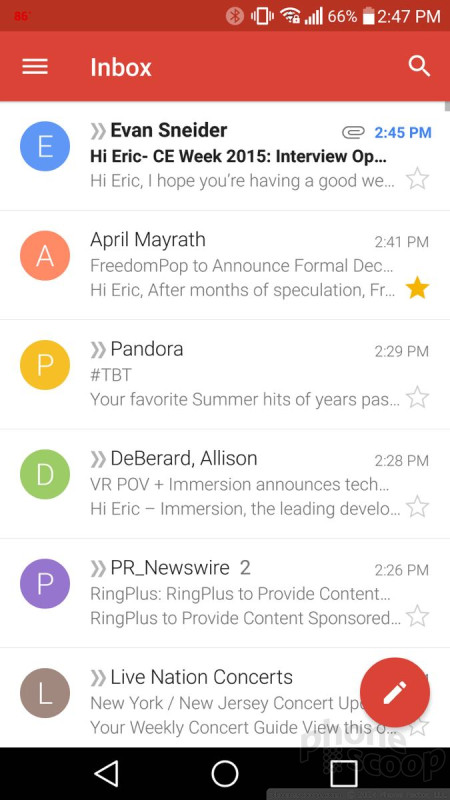








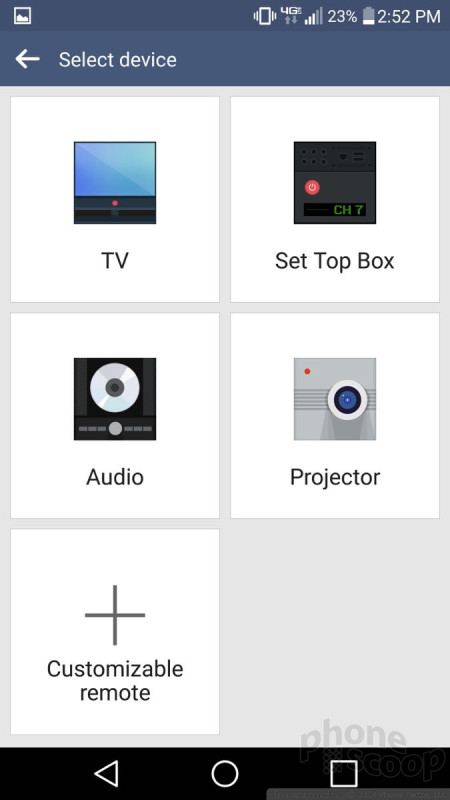


















































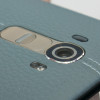 Hands-On: LG G4
Hands-On: LG G4
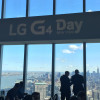 Liveblog of LG's G4 Launch Event
Liveblog of LG's G4 Launch Event
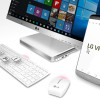 LG's VPInput App Lets PCs Control Smartphones Via Bluetooth
LG's VPInput App Lets PCs Control Smartphones Via Bluetooth
 LG G4 Earns Early Marshmallow Update
LG G4 Earns Early Marshmallow Update
 T-Mobile to Launch LG G4 On June 3
T-Mobile to Launch LG G4 On June 3
 LG G4 (GSM)
LG G4 (GSM)



